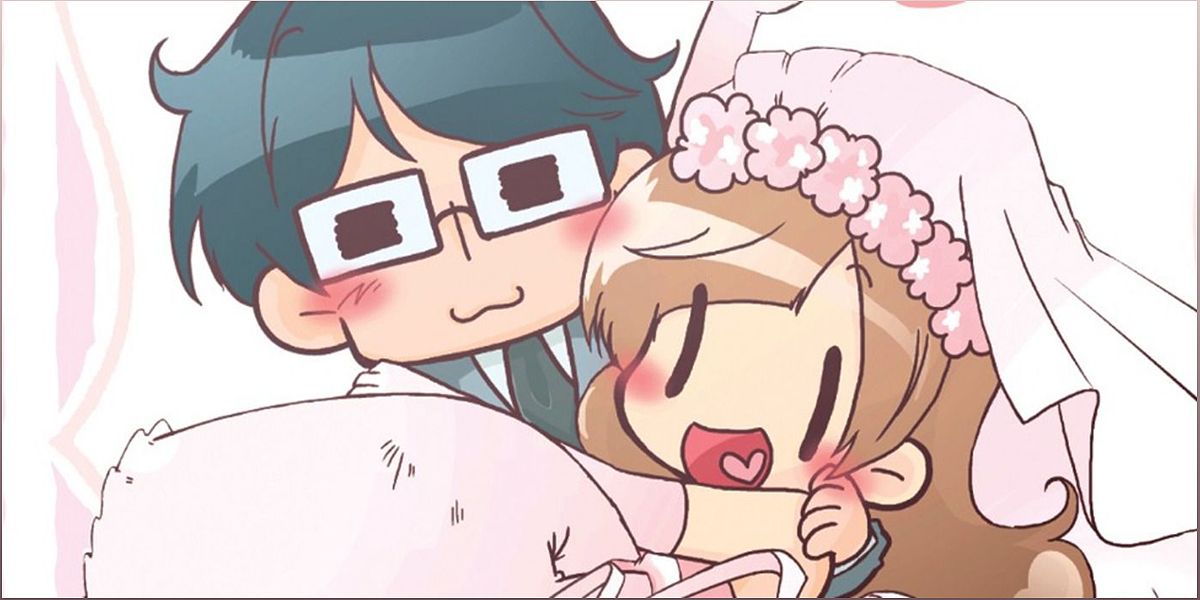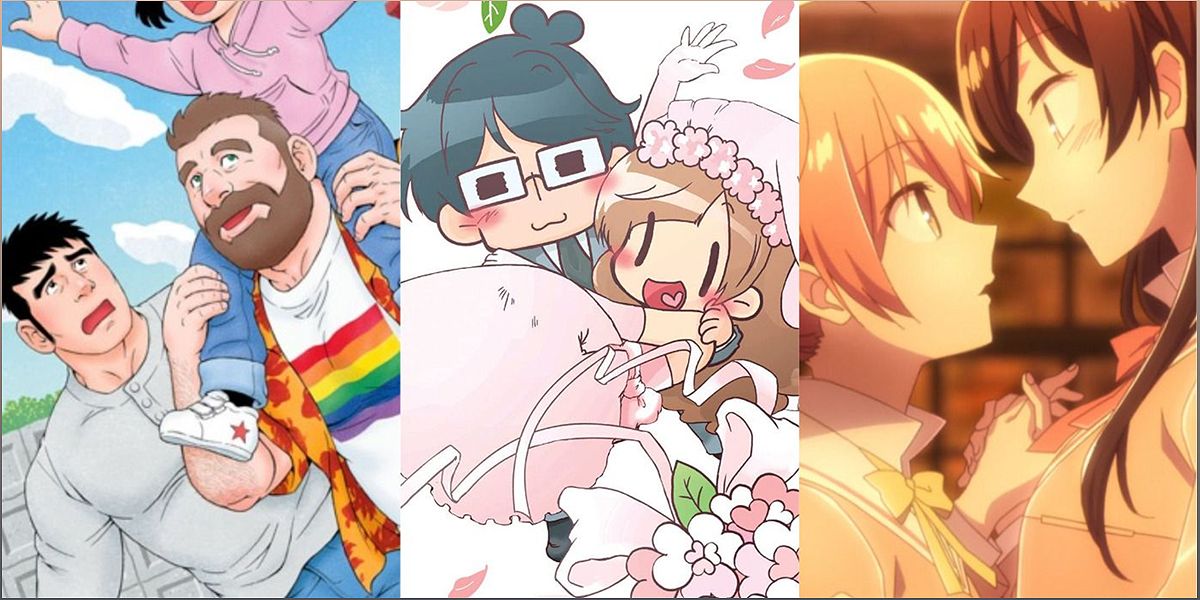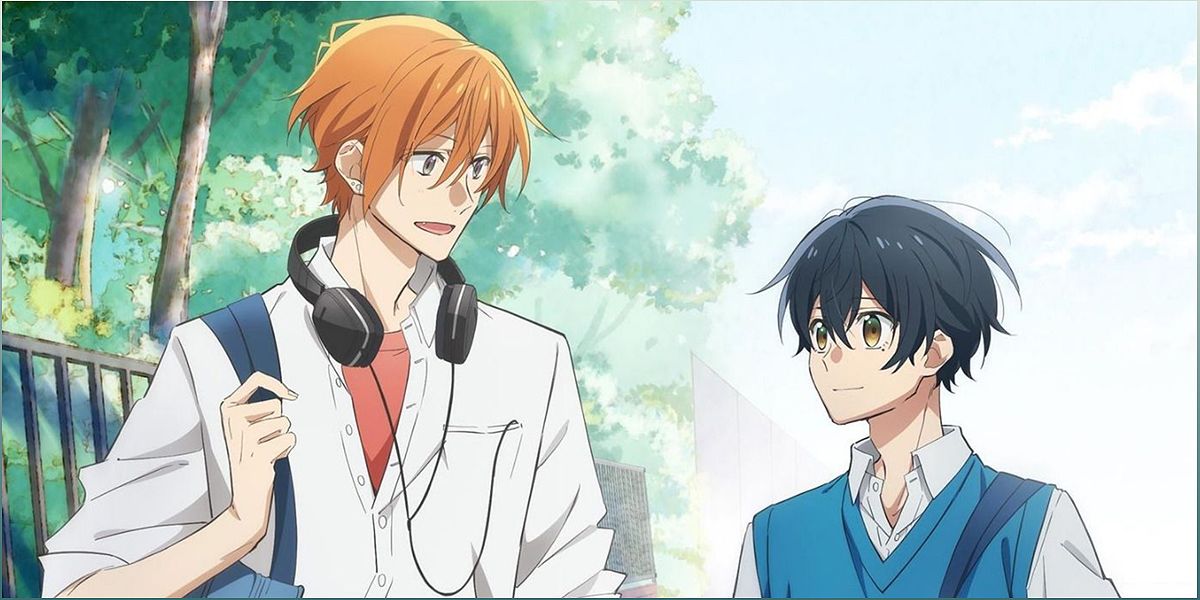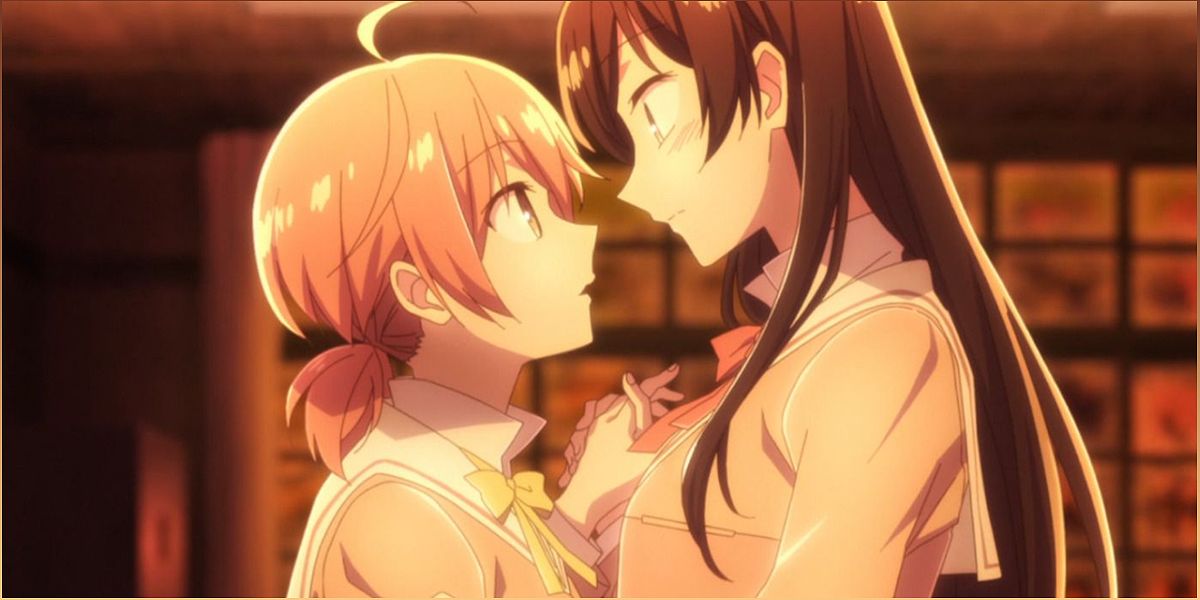10 Heartwarming LGBTQ Couples in Japanese Anime and Manga

Explore diverse and relatable LGBTQ relationships in Japanese anime and manga, showcasing the power of representation and love knows no boundaries.
The Age-Gap Romance of Eri and Wako in “The Two of Them Are Pretty Much Like This”
In the manga “The Two of Them Are Pretty Much Like This,” readers are introduced to the heartwarming age-gap romance between Eri and Wako. This slice-of-life story beautifully portrays the mundane yet captivating aspects of everyday life when you’re with the person you love. It also tackles generational gaps with ease, highlighting the relatability and wholesomeness of the relationship. The manga’s gentle and empathetic voice, as well as its focus on emotional connection, make it a must-read for fans of LGBTQ romance in Japanese manga.

( Credit to: Screenrant )
Exploring High School Romance in “Sasaki to Miyano”
“Sasaki to Miyano” delves into the high school romance between Miyano, a “fudanshi” who loves Boys’ Love manga, and Sasaki, who surprisingly accepts Miyano’s interests. The manga not only showcases their blossoming relationship but also introduces supportive side characters that add charm to the story. With its friendly and relatable tone, this manga is perfect for readers seeking heartwarming LGBTQ representation in Japanese anime and manga.

( Credit to: Screenrant )
The Importance of Acceptance in “Love Me For Who I Am”
In the manga “Love Me For Who I Am,” readers follow the journey of Mogumo, a nonbinary individual who meets Tetsu, a boy working at a maid cafe. The manga beautifully portrays Tetsu’s unwavering support for Mogumo’s identity, even in the face of resistance from Mogumo’s parents. This cute and supportive couple showcases the importance of understanding, acceptance, and the power of love in overcoming obstacles. With its inclusive and compassionate writing style, this manga is a testament to the progress of LGBTQ representation in Japanese media.

( Credit to: Screenrant )
The Beautiful Romance of Yuri and Victor in “Yuri on Ice”
“Yuri on Ice” is a well-known anime that explores the romantic relationship between Yuri and Victor through the world of ice skating. This series not only delves into the characters’ motivations and personalities but also showcases their love for each other, warming the hearts of the audience. With its captivating storytelling and emotional depth, “Yuri on Ice” has become a beloved example of LGBTQ representation in Japanese anime.

( Credit to: Screenrant )
Romantic Attraction in a Post-Apocalyptic Dystopia in “No. 6”
“No. 6” takes place in a post-apocalyptic dystopia and follows the subtle romantic attraction between Shion and Nezumi. While the representation is not overt, it is clear that the characters share a deep connection. Normalizing LGBTQ relationships, even in epic adventures, is crucial for representation. This anime series challenges traditional norms and offers a refreshing perspective on love and acceptance in a futuristic setting.

( Credit to: Screenrant )
A Heartwarming Shoujo Ai Journey in “Kase-San and Morning Glories”
“Kase-San and Morning Glories” is a quintessential high school shoujo Ai manga that tells the story of Yui Yamada, a shy girl who falls in love with Kase-san, the star of the track team. The blossoming romance between these two girls is a heartwarming and angst-free journey, perfect for fans of shoujo-ai. With its poetic and descriptive writing style, this manga captures the emotions and nuances of young love, making it a delightful read for LGBTQ romance enthusiasts.

( Credit to: Screenrant )
Exploring LGBTQ Issues and Relationships in “My Brother’s Husband”
“My Brother’s Husband” portrays the relationship between Mike and Ryoji, even though Ryoji has tragically passed away. The manga presents their relationship in a positive light, while also delving into the main character Yoichi’s internalized homophobia. This realistic portrayal of gay romance provides insight into Japan’s perspective on LGBTQ issues and the challenges faced by individuals within the community. With its honest and heartfelt storytelling, this manga offers readers a glimpse into the complexities of LGBTQ relationships.
Challenging the Notion of Romance in “Bloom Into You”
“Bloom Into You” is an iconic shoujo manga that follows the story of Yuu Koito, a girl who doesn’t experience the same romantic feelings as the characters in her beloved shoujo manga. When the school council president, Touko, confesses her feelings to Yuu, she feels confused. This manga challenges the idea of romance and emphasizes that love takes work and more than just fleeting emotions. With its thought-provoking themes and exploration of complex emotions, “Bloom Into You” is a must-read for fans of LGBTQ romance in Japanese manga.
A Refreshing Take on Gay Romance in “What Did You Eat Yesterday?”
“What Did You Eat Yesterday?” stands out among LGBTQ manga by featuring a middle-aged gay couple, Shiro and Kenji, leading a mundane yet satisfying life in Tokyo. The manga uses their nightly dinners as a framing device to explore the everyday lives of gay people in Japan. By minimizing the focus on sex and highlighting the captivating mundanity of everyday life, this manga offers a refreshing take on gay romance. With its down-to-earth and relatable storytelling, “What Did You Eat Yesterday?” is a must-read for those seeking LGBTQ representation in Japanese manga.
The Hopeful Autobiographical Journey in “The Bride Was a Boy”
“The Bride Was a Boy” is an autobiographical manga that shares the author’s experiences as a transgender woman growing up in Japan. The author’s honesty about the struggles faced as a transgender individual is balanced with a positive and upbeat outlook on life. This manga provides hope and support for readers who may have faced similar challenges, while also shedding light on Japan’s perspective on LGBTQ issues. With its personal and empowering narrative, “The Bride Was a Boy” is a powerful read for those seeking LGBTQ stories in Japanese manga.
Celebrating Diverse Relationships in Japanese Anime and Manga
These LGBTQ couples from Japan’s anime and manga industry demonstrate the power of representation and storytelling. They remind us that love comes in many forms and that everyone deserves to see themselves reflected in media. As the world progresses, it is essential to continue embracing and celebrating diverse relationships. Whether it’s through age-gap romances, high school love stories, or post-apocalyptic adventures, these LGBTQ couples showcase the beauty and depth of love, transcending boundaries and touching the hearts of readers and viewers alike.




